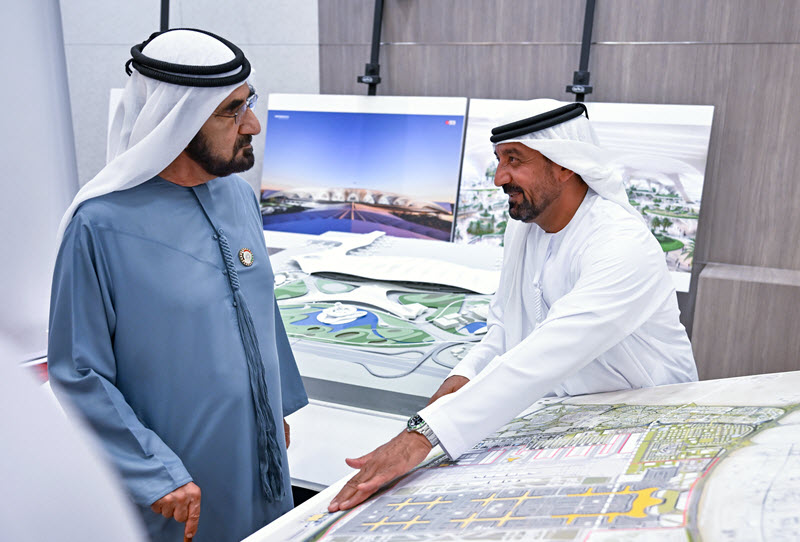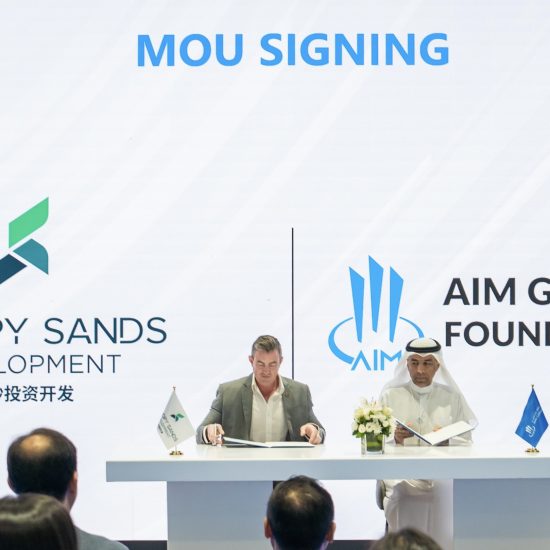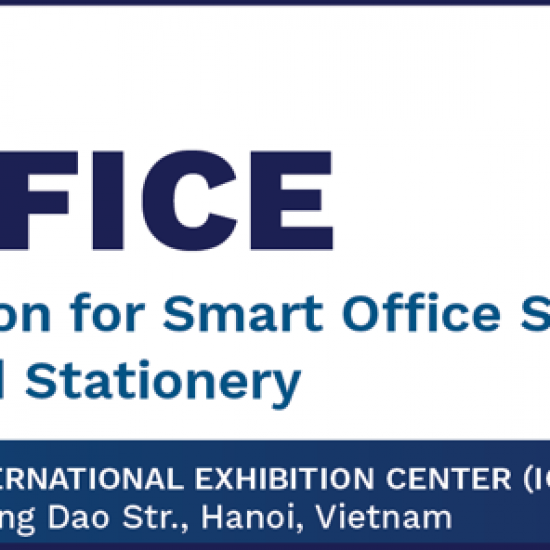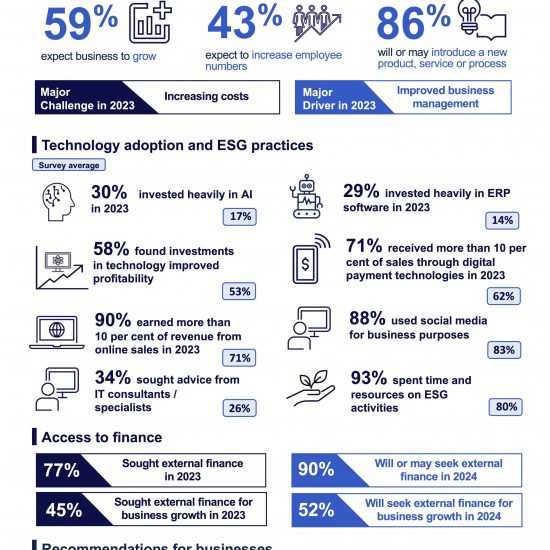
Dubai Government will invest Dh128 billion (US$34.87 billion) in developing the world’s largest airport terminal at Al Maktoum International Airport, part of the 140-square km Dubai South Aerotropolis, which has a design-built capacity to handle 260 million passengers per annum.
Al Maktoum International Airport will cover 70 square kilometres, or half of the 140-square kilometre Dubai South, which is ten times the size of the existing Dubai International Airport. The airport will be able to handle 12 million tonnes of cargo per annum. The first phase of the airport development will be completed in ten years.
Sheikh Mohammed bin Rashid Al Maktoum, Vice President and Prime Minister of the UAE and Ruler of Dubai, reviewed the strategic plan of the Dubai Aviation Engineering Projects and approved designs for the new passenger terminal at Al Maktoum International Airport, which will be the largest in the world when fully operational. Set to be built at a cost of Dh128 billion (US$34.87 billion), the new terminal will ultimately enable the airport to handle a passenger capacity of 260 million annually, Dubai Government said in a statement.
When completed, it will also become the world’s largest Aerotropolis, or airport city that will host hundreds of residential and commercial towers, a large logistics base, Dubai Aviation City, a golf course and golf community, Dubai Exhibition City, as well as Expo2020 City, among other facilities. Once completed, together with Jebel Ali Port and Jebel Ali Free Zone, Al Maktoum International Airport and Dubai World Central will create the world’s largest sea-to-air logistics corridor and reinforce Dubai’s position as the largest regional supply chain hub.
The announcement comes within two weeks of the devastating storm and record rainfall that badly affected the existing Dubai International Airport – the world’s 2nd largest airport – disrupting more than 1,200 flights in a day when stormwater submerged the airport runways and taxi-ways. The airport, however, was re-opened within two days.
The approval came during His Highness Sheikh Mohammed’s visit to the Dubai Aviation Engineering Projects, accompanied by Sheikh Hamdan bin Mohammed bin Rashid Al Maktoum, Crown Prince of Dubai and Chairman of The Executive Council of Dubai, and Sheikh Maktoum bin Mohammed bin Rashid Al Maktoum, First Deputy Ruler of Dubai and Deputy Prime Minister and Minister of Finance.
Sheikh Mohammed said: “Al Maktoum International Airport will enjoy the world’s largest capacity, reaching up to 260 million passengers. It will be five times the size of the current Dubai International Airport, and all operations at Dubai International Airport will be transferred to it in the coming years. The airport will accommodate 400 aircraft gates and feature five parallel runways. New aviation technologies will be employed for the first time in the aviation sector.
“As we build an entire city around the airport in Dubai South, demand for housing for a million people will follow. It will host the world’s leading companies in the logistics and air transport sectors. We are building a new project for future generations, ensuring continuous and stable development for our children and their children in turn. Dubai will be the world’s airport, its port, its urban hub, and its new global centre.”
Sheikh Ahmed bin Saeed Al Maktoum, Chairman of Dubai Aviation City Corporation, President of Dubai Civil Aviation Authority, Chairman and CEO of Emirates Airline and Group, said, “It is expected that the first phase of the project will be ready within a period of 10 years, with a capacity to accommodate 150 million passengers annually.
“The new airport, which will ultimately be over five times the size of Dubai International, will prepare the ground for the next 40 years of anticipated growth in Dubai’s aviation sector. It will respond to the Hub Airline ambitious plans in terms of fleet acquisition and passenger growth. The airport will provide cutting-edge technologies, passenger facilities with unmatched level of service, and state-of-the-art aviation support facilities.
“Al Maktoum International (AMI) is planned in such a way as to represent a leap into the future. It will comprise of five parallel runways with a quadruple independent operation, west and east processing terminals, four satellite concourses with over 400 aircraft contact stands, uninterrupted automated people mover system for passengers, and an integrated landside transport hub for roads, Metro, and city air transport.
“While embracing sustainability, Al Maktoum International will strongly contribute to mitigate environmental emissions, aligning with the UAE’s vision for a sustainably built environment. Its integrated approach is targeted to leverage local resources and climatic conditions achieving exemplary efficiency targets and sustainability goals. AMI aims to achieve a LEED Gold Certification.”
Khalifa Al Zaffin, Executive Chairman of Dubai Aviation City Corporation, highlighted the economic benefits of the project. “The development of this new airport will be an integral part of Dubai’s economy and major contributor to the Dubai Economic Agenda (D33). It will generate estimated workforce and residential requirement for over a million people living and working in Dubai South (the aerotropolis), which has been under development and operation since 2007,” he said.
Paul Griffiths, CEO of Dubai Airports, the operating company for both the airports in Dubai, said, “The growth of Dubai has always been hand in hand with the growth of its aviation infrastructure and today we see another bold step on that journey.
“The announcement of phase two of Al Maktoum International Airport’s expansion, representing a substantial investment of Dh128 billion, marks the start of a huge investment of resources by our many stakeholders in designing and building a state-of-the-art airport that will provide a quick, convenient, and high quality 21st century experience for our customers. This further solidifies Dubai’s position as a leading aviation hub on the world stage.
“DXB will continue to serve as the primary hub, meeting the needs of 100 million plus guests over the next few years as phase two of DWC takes shape.”
Also published on Medium.






